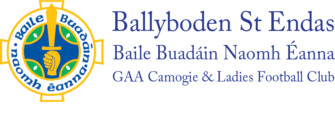A Sporting View by John Morrison
Develop speed as a skill
What is speed? What is skill? Is speed a skill every GAA needs? What are the characteristics of speed? What stage of a player’s career should we try to develop speed? Coaches, especially in GAA, do not use the critical “window” periods of accelerated adaption at appropriate stages of a player’s
development. Any damage done between the age of 6-10 and 10-16 cannot be fully corrected and those damaged players will NEVER reach their potential. Speed is always trainable but it declines with age. There are two critical windows of opportunity of accelerated adaptation to speed training:
- The first is 7-9 years of age.
- The second is 13-16 years of age.
The first window is the AGILITY, QUICKNESS window, CHANGE OF DIRECTION (COD), LATERAL and MULTIDIRECTIONAL or CHAOTIC SPEED. Durations of five seconds or less are best. Nature makes children play “schoolyard tig” to develop this window, lateral multidirectional and chaotic speed of 5-20 sec duration. If players have not learnt the fundamental movement skills required for football or hurling by age 12 or 13, success within that activity would be severely limited or beyond their reach. Thus speed as a skill must be developed alongside kicking, catching etc. The two combined produces “speed of thought” in a player.
COMPONENTS
The following components of speed I train all year:
- Reactive Speed- reacting to opponents, ball etc.
- Reactive Strength- “Functional Strength” using bodyweight conditioning, “saq” or
plyometrics. - Linear Speed- straight line running over 3-5m with FULL recoveries.
- CHANGE OF DIRECTION- multidirectional running.
- ACCELERATION- the first 1-3m, attacking the ball, intercepting the ball etc.
- DECELERATION- stopping in 2-3 steps from max speed without injury.
- MAXIMUM EFFECTIVE SPEED- with a ball in hand hopping and soloing at speed and with the
added complication of skill. - EVASION- swerving, side-stepping, rolling, weaving- all part of chaotic speed.
Quickness. - Agility- often ladders are used without having learnt proper mechanics of running. Hurdles
and mechanics before speed over ladders ALWAYS. - Decision making- (Speed of Thought).
- Core Strength- maintains body position; prevents injury.
- Speed Repeatability- multiple sprints within games with specific recoveries progressively
loaded to take account of periodisation of training. - Skill based fitness training games- 2V2; 5V5; 8V7 etc for two minutes recovery 3-4 times in a
pitch 30x20m.
Speed always needs recovery. Full recovery is 1 minute rest for every 10m of speed. Rest can be active (core work) or passive. Speed, skill and tactics should be integrated to give best results. What we see is what we think and what we think is what we do. Thus quality coaching requires visual training, speed training, skill training, teamwork and teamwork to be developed and integrated to produce high level thinking, speed of thought and quality teamwork. Gaelic games, like all sport, is played with the “head moving the body” thus “where the mind goes the body follows” and the
faster the better is the object of training and development. See it, put your mind to it and do it quicker or faster than your opponent is the secret to winning games!



